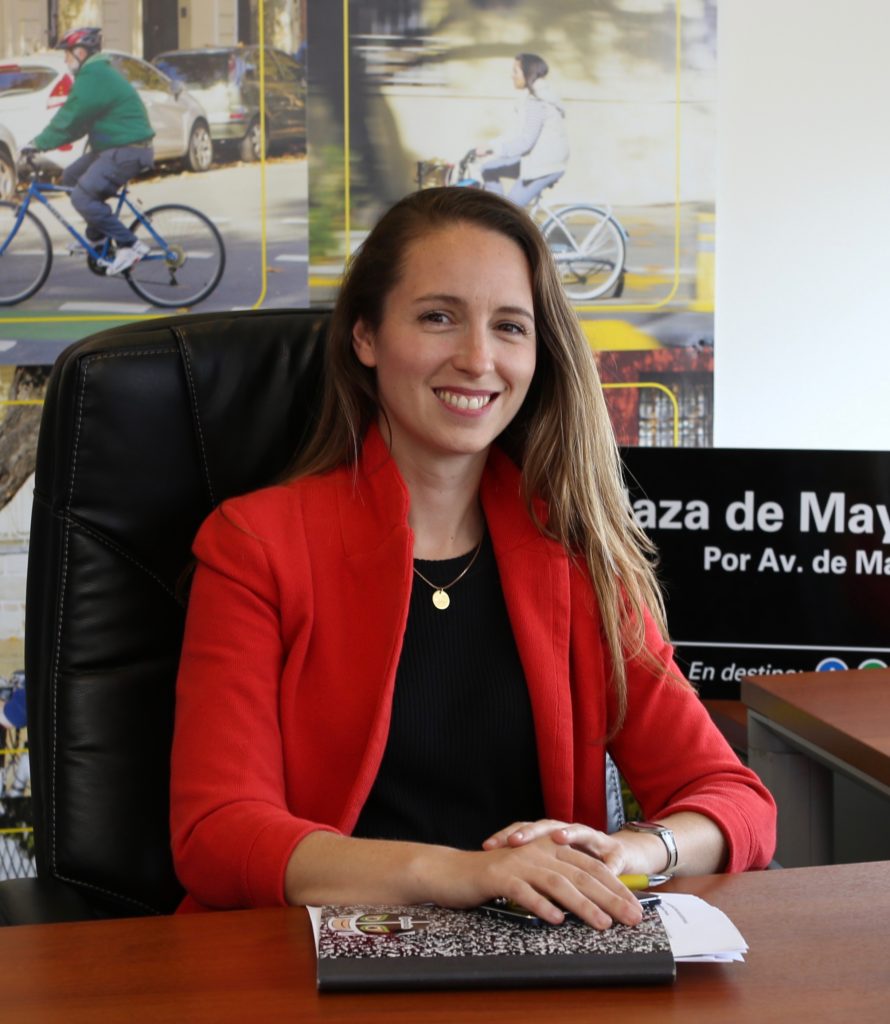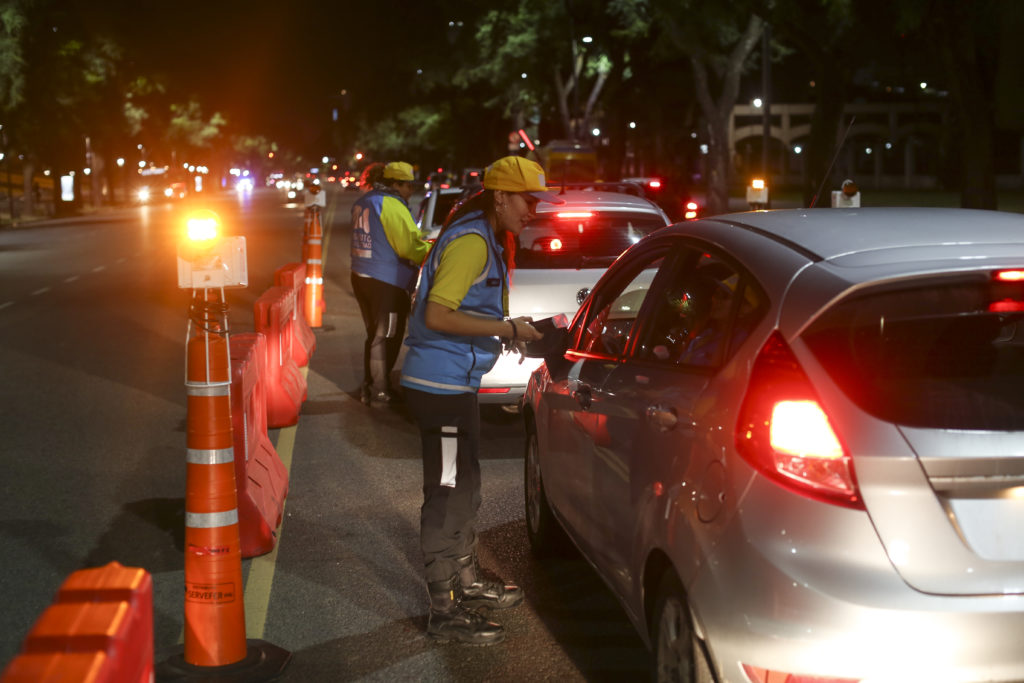
Driving after drinking alcohol is remarkably common in Buenos Aires, Argentina—43% of city drivers say they have done it in the past year, compared to 20% nationally, according to a city survey—with rates even higher among young drivers. Locals are generally unaware of the problem or its deadly risks. Working with the Partnership for Healthy Cities, the city is working to curb drink driving by strengthening law enforcement and making these roadside stops highly visible to the public. Since the project began in 2017, Buenos Aires has doubled the number of people stopped in alcohol checkpoints in the city, launched a TV and billboard campaign, trained transit agents and introduced the use of a new pre-breathalyzer device that saves time.
We reached out to road safety expert Paula Bisiau, Buenos Aires’ Undersecretary of Sustainable and Safe Mobility and the city’s technical lead on the Partnership project, to find out more.
Why are drink driving rates so high in Buenos Aires, and what are your main concerns?
Nightlife is a big deal in Buenos Aires, and the city has vast cultural and culinary offerings. It is a place where people like to meet up for celebrations or simply to spend time together. It’s part of our culture.
Nightlife helps make our city exciting and alive but being responsible about how you get from one place to the other is vital too. About 20% of driving fatalities involve alcohol consumption, which is why it’s so important for us to prioritize this work.
Drink driving is a growing concern among young people in particular: Almost half of such fatalities in 2018 were between 15 and 34 years old.
Do you have a personal connection to road safety and urban mobility?
I was born and raised in Buenos Aires, and one of the gifts I remember most as a kid is a green bike that my dad gave me. That’s how I learned to ride. Then when I was 15, they gave me a red bike, which I also used a lot. I would ride all the way downtown to buy film for my camera, another one of my hobbies.
At that age, I also liked to just grab my city bus map—this was before we had them on our phones—and ride the entire system. It was a way to see the whole city and get away from everyday life but mostly just to feel free.
What are you most proud of in your work with the city?
One of my greatest satisfactions is the cultural change around bicycles, the fact that more and more people choose this means of sustainable and healthy mobility.
Also, I think we have managed to place the topic of road safety on the public agenda, another part of the cultural change we aspire to.
As for drink driving enforcement, we’re getting better and better at integrating new tools and making sure the public sees the checkpoints—we are out there 365 days a year.

What are some upcoming challenges?
In recent years, transport in general has experienced great technological advances. New forms of mobility have emerged that occupy less physical space and are sustainable, like electric bikes and skateboards, which are supplementing the traditional bicycle. With the introduction of these new means of transportation, safe and effective coexistence is a priority.
Another challenge that is presented to us, also in the framework of road safety, is protecting pedestrians. For us, it is essential that all the residents of the city understand that pedestrians occupy the most vulnerable place of all—and that we are all pedestrians.
What are your hopes for this drink driving work in the future?
We hope that the decision not to drink and drive becomes a social norm, and that there is a certain social shaming of those who do drink and drive, so that it’s less and less common. The goal, of course, is to see this reflected in a reduction of fatalities related to alcohol consumption.
About the Partnership for Healthy Cities
The Partnership for Healthy Cities is a prestigious global network of cities committed to saving lives by preventing noncommunicable diseases (NCDs) and injuries. Supported by Bloomberg Philanthropies in partnership with WHO, as well as Vital Strategies, this initiative enables cities around the world to deliver a high-impact policy or programmatic intervention to reduce NCD risk factors in their communities. For more information, visit: https://partnershipforhealthycities.bloomberg.org/